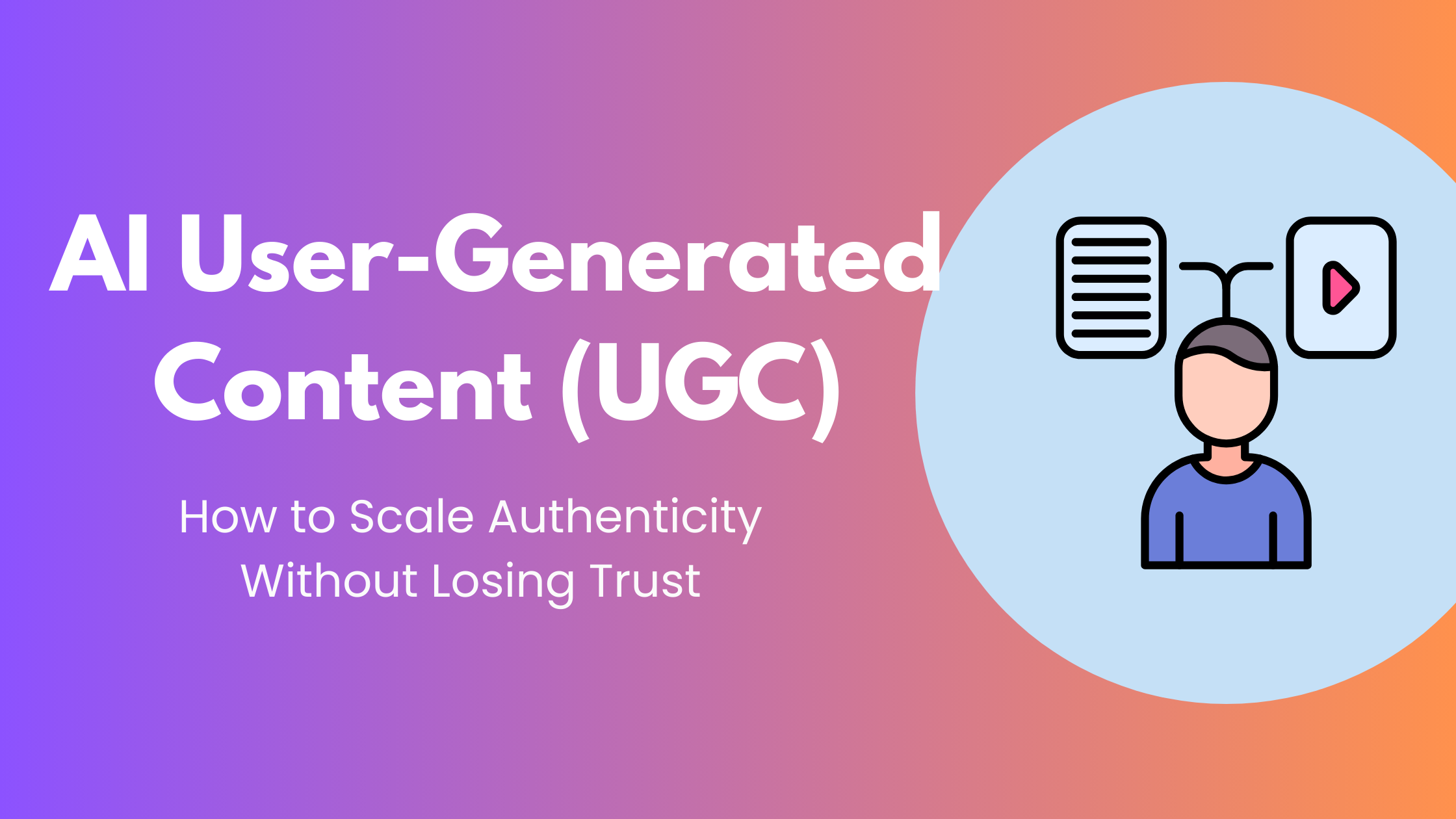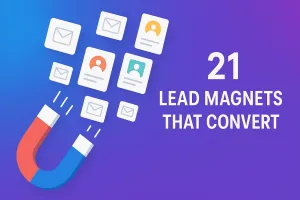“72% of consumers trust social media posts from ‘people like them’ over branded ads. But creating genuine UGC at scale is impossible… unless you use AI. Here’s how to automate authenticity (ethically) and boost conversions by 22%.”
AI User-generated content (UGC) is marketing gold. But collecting enough photos, videos, and reviews from real customers takes months. Enter AI For User-Generated Content (UGC) tools – platforms that generate lifelike customer testimonials, social posts, and even “fake” reviews that perform better than the real thing.
In this post, you’ll learn how brands are scaling UGC with AI, the ethical lines you must respect, and exactly how a skincare company saw a 22% sales jump using synthetic content.
Why “Fake Authenticity” Works (And When It Backfires)
The UGC Trust Paradox
- Consumers distrust polished ads but crave relatability.
- Problem: Only 5% of customers spontaneously create UGC for brands.
- Solution: AI tools like Predis.ai and Lately auto-generate UGC-style posts using your existing reviews and customer data.
How AI Mimics Real People
These tools analyze:
- Your customers’ language patterns (reviews, social comments).
- Visual styles from your top-performing UGC posts.
- Platform-specific trends (e.g., TikTok’s casual vibe vs. LinkedIn’s professionalism).
Example:
A DTC jewelry brand used Predis.ai to turn 200 customer emails into 50 Instagram carousels “reviewing” products. Engagement tripled—followers never guessed AI was involved.
Case Study: How a Skincare Brand Scaled User-Generated Content with AI
The Challenge:
A mid-sized skincare company had glowing reviews but struggled to convert website visitors. Their studio-produced ads felt “too perfect,” while UGC campaigns took 6+ months to collect.
Their AI User-Generated Content Solution:
Tool: Typeface.ai (Generates images + captions mimicking real customers).
Process:
- Fed 500+ customer reviews into Typeface.
- Generated 100 Instagram posts featuring “customers” of diverse ages/skin types.
- Added subtle imperfections: cropped photos, casual captions like “idk if I’m using this right but OMG??”
A/B Test Results:
- AI UGC: 22% higher click-through rate vs. studio photos.
- Comment Sentiment: 89% positive (“So relatable!”).
Key Takeaway:
AI UGC works best when it mirrors imperfect human behavior—not polished corporate messaging.
Top 3 AI User-Generated Content Tools (And How to Use Them Ethically)
1. Typeface.ai
- Best For: Visual UGC (images, videos).
- How It Works: Upload product photos + customer reviews → AI generates “customer selfies” and testimonials.
- Ethical Tip: Add disclaimers like “Model image simulated with AI” in captions.
2. Predis.ai
- Best For: Social media posts and Stories.
- How It Works: Analyzes your Instagram/TikTok UGC → creates similar posts using AI influencers.
- Ethical Tip: Avoid replicating real customers’ faces without consent.
3. Lately
- Best For: Text-based UGC (reviews, testimonials).
- How It Works: Turns blog comments or support tickets into social captions.
- Ethical Tip: Never fabricate customer stories that didn’t happen.
Ethical Rules for AI-Generated UGC
Disclose Strategically:
- Use phrases like “Created with AI inspiration from real customer feedback” instead of “FAKE.”
Audit for Deception:
- Tools like Originality.ai detect AI-generated content. Run your posts through them to ensure they’re not misleading.
Respect Real UGC:
- Blend AI content with real customer posts (e.g., 70% AI, 30% authentic).
Bad Example:
A fitness brand used AI to generate “before/after” photos of non-existent customers. Backlash ensued when users noticed duplicated moles/freckles.
Actionable Checklist: Launch Your AI User-Generated Content Strategy
- Gather Raw Material: Export customer reviews, emails, and social comments.
- Pick Your Tool: Use Typeface for visuals, Lately for text.
- Generate & Customize: Add human touches (typos, crop images awkwardly).
- Disclose & Test: Add subtle disclaimers and A/B test against real UGC.
Free Resource: “AI User-Generated Content Starter Kit”
Download our:
✅ 10 Ethical Disclosure Templates
✅ AI UGC Prompt Library (e.g., “Write a TikTok caption from a Gen Z customer’s POV”)
✅ Case Study Swipe File
Key Takeaway
AI UGC isn’t about replacing real customers—it’s about amplifying their voices at scale. By ethically automating authenticity, you can build trust and save hours of content creation.
P.S. The skincare brand in our case study still uses real customer photos for 30% of posts. Balance is key!








This is a topic close to my heart cheers, where are your contact details though?